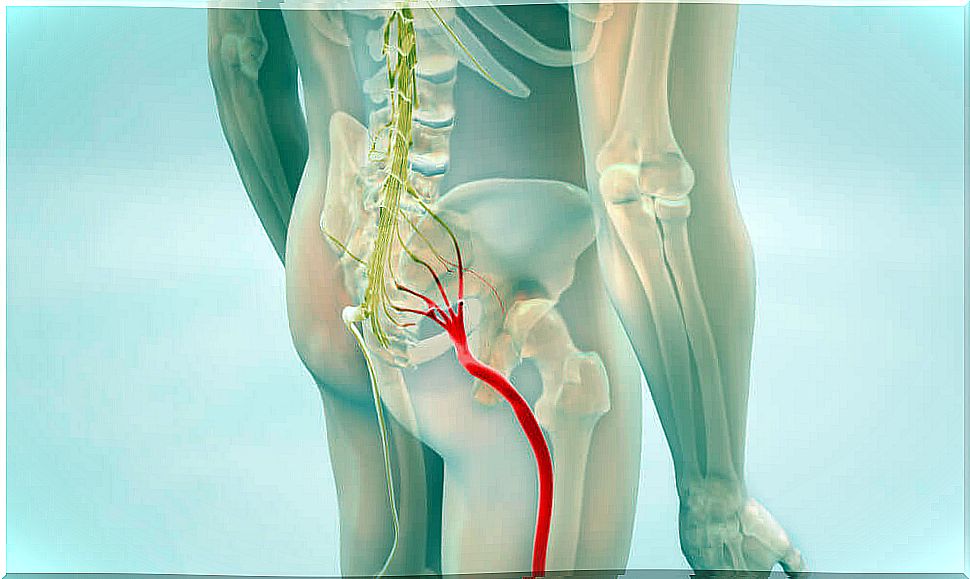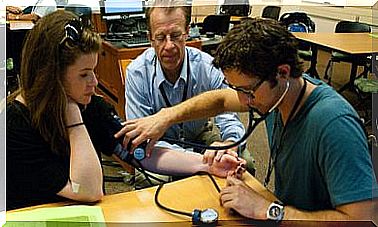5 Ways To Know If You Have Sciatica
When you have back pain and it is bothering you a lot in your routine, you may wonder what you have and what is it called: lumbago, sciatica? And then you might wonder how they differ from each other and how to treat them correctly.
Although a visit to the doctor in these cases will be essential to be able to determine the cause of the problem and thus know what exactly you have, below we will discuss some ways to know if you have sciatica. In this way, you can tell the doctor more precisely what is ailing you and how it has affected you.
What is sciatica?
Sciatica is a type of pain that can radiate along the sciatic nerve to the foot. It usually affects only one side of the body and according to the data provided by the Merck Manual, “sciatica occurs in approximately 5% of people with back pain.”
It is not always possible to determine the exact cause. However, there are cases in which, on making an evaluation, it is evident that the cause is a herniated disc or an inflammation due to ligament sprain, for example.
Sciatica is the nerve that runs from the spine to the foot. When it is tight, sciatica (that is, pain) occurs. This occurs because its function is altered. This is when you notice pain, weakness, and a tingling sensation.

Associated symptoms
- Tingling sensation.
- Numbness (in the leg or just the foot).
- Pain (persistent or sudden when performing certain movements).
- The pain may be worse when sitting, walking, running, climbing stairs, stretching your legs, coughing or sneezing, exerting yourself, etc.
Therefore, if you feel pain that runs from your back to one of your legs and also notice numbness or tingling, as well as discomfort, it may not be a cramp, but sciatica.
Let’s see below other symptoms that may indicate that perhaps the problem is sciatica.
Weak knees

When the knee of the affected leg is weak, the problem may be sciatica.
It should be noted that when pain affects both legs, it is necessary to seek medical help immediately. Surgery may be needed urgently.
You can’t run anymore
In athletes it is difficult to detect whether pain in one leg is a symptom of sciatica. This is because sciatica and piriformis syndrome have almost the same symptoms. However, the second is more common than the first.
In addition, both have tingling, pain, and numbness that spreads up the leg. You could also be suffering from another disease so it is advisable to go immediately to the doctor for an evaluation. Ignoring the warnings your body sends you could make the situation worse.
Although there is an idea that athletes are very healthy people, you should never overlook any pain or discomfort.
You feel pain
Both the persistent pain that goes from the back area to the leg and the sudden pain in that same area when doing different activities can indicate that you suffer from sciatica.
When you go to the doctor you should speak clearly. Take into account the following recommendations:
- Do not just tell him that you feel pain, specify from what point you experience it, how it has affected you in different activities, if it is sudden or not, how long you have felt it, etc.
- You must locate with a finger the point where the pain begins.
- It specifies if the pain is localized or if it covers the entire leg.
- You should also clarify if only one or both legs hurts.
Pain can be treated from many things and does not necessarily have to be sciatica. Therefore, it is important to provide as much detail as possible to the doctor.
The doctor Jacob Teitelbaum (author of works such as “ Real Cause, Real Cure: The 9 root causes of the most common health problems and how to solve them ”. some key techniques to determine if you have sciatica:
- Use your thumb and push your fingers over your lower back muscles.
- Try to find the points that are causing the pain.
- If the pain feels like a little push all the way to the feet, it is most likely sciatica.
Faced with these symptoms, try to pass this test
What you have to do is lie down and stretch your feet. With the help of a second person, raise your leg, extended, 30 to 70 degrees. Your companion is the one who should lift your leg, as he will be your examiner.
If after performing this test you feel pain in the entire leg, behind the knee and even the toes, it means that you most likely have sciatica.
Our recommendation is that you go to a physical therapy specialist or a doctor so that he or she can perform this test. Be aware that jerky or incorrect movements can aggravate or worsen symptoms.
Something else is happening

Apart from pain in the back, knee and leg, you may know that you have sciatica if you have noticed that there is something different in your body. Perhaps the bowel and bladder are losing all control of their movements. According to doctors, this could be a surgical emergency.
The spokesman for the American Academy of Orthopedic Surgeons, Alan Hilibrand, states that this situation is not common. S If you feel that the spine is putting a lot of pressure on the nerve it can affect the bladder and intestine consult your doctor, as these damages can become permanent.
The good news: sciatica goes away
The good news about sciatica is that it goes away on its own in 80% of cases. It has not yet been determined whether the disc has moved back into place or whether the nerve is no longer bothered.
What you can do during this time is to make sciatica less uncomfortable by taking anti-inflammatories and doing the physical therapy indicated by the doctor.
However, the symptoms probably last more than 3 months. In any case, it is always important that you go to the doctor and follow all his recommendations promptly.
Keep in mind that physical therapy is often helpful in many cases.









